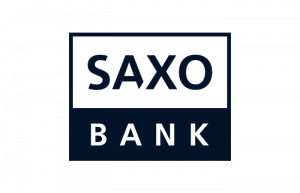Keeping Up with the Dow Jones Live: A Guide for Investors
Tracking the Dow Jones live is crucial for investors seeking real-time insights into market trends. This article explores the importance of live updates, how to access them, and their impact on investment strategies.

In the fast-paced world of stock trading, staying updated with the Dow Jones live is essential for investors aiming to make informed decisions. The Dow Jones Industrial Average (DJIA), commonly referred to as the Dow, is one of the oldest and most-watched stock indices in the world, comprising 30 prominent companies in the U.S. economy. Its movements offer valuable insights into the overall market health and investor sentiment, making live tracking a critical tool for anyone involved in the financial markets.
Why Track the Dow Jones Live?
The Dow Jones serves as a barometer for the broader U.S. stock market and, by extension, the U.S. economy. Its real-time performance can signal changes in economic conditions, investor confidence, and market trends. For day traders, access to live data is indispensable for capitalizing on short-term market movements. Long-term investors, while less reliant on moment-to-moment fluctuations, also benefit from live updates to adjust their strategies in response to significant market events.
Accessing Dow Jones Live Updates
Thanks to technological advancements, accessing Dow Jones live updates has never been easier. Financial news websites, stock market apps, and brokerage platforms provide real-time data, often complemented by analysis and commentary. Additionally, financial news networks offer live coverage of the stock market, providing insights and expert opinions on market movements. Investors should select reliable sources that offer timely and accurate information to ensure they are making decisions based on the most current data available.
Impact on Investment Strategies
Real-time tracking of the Dow Jones can significantly impact investment strategies. For active traders, it means the difference between capitalizing on opportunities and missing out on potential gains. Live updates allow traders to react swiftly to market movements, whether it’s a sudden drop due to geopolitical tensions or a surge following a positive earnings report. For long-term investors, staying informed about live market trends can inform decisions about portfolio rebalancing or risk management, ensuring alignment with broader investment goals.
Understanding Market Volatility
The Dow Jones live feed also plays a crucial role in understanding and navigating market volatility. By monitoring the index in real time, investors can gauge the market’s reaction to news events, economic indicators, and other drivers of change. This understanding can lead to more strategic trading decisions, as investors learn to interpret how various factors influence market movements.
Tools and Techniques for Tracking the Dow Jones Live
Several tools and techniques can enhance the experience of tracking the Dow Jones live. Technical analysis software, for example, can provide real-time charts and indicators that help predict future movements based on historical data. Setting up alerts for specific thresholds or movements can also help investors stay informed without constantly monitoring the market.
Conclusion
Keeping an eye on the Dow Jones live is more than just watching numbers change on a screen; it’s about staying connected to the pulse of the financial markets. Whether you’re a day trader looking to make quick decisions based on market fluctuations or a long-term investor seeking to understand broader economic trends, access to live data is invaluable. By leveraging technology and utilizing strategic tools, investors can navigate the complexities of the stock market with confidence, making informed decisions that align with their financial goals. As the financial landscape continues to evolve, the ability to track the Dow Jones in real time will remain an essential component of successful investing.









